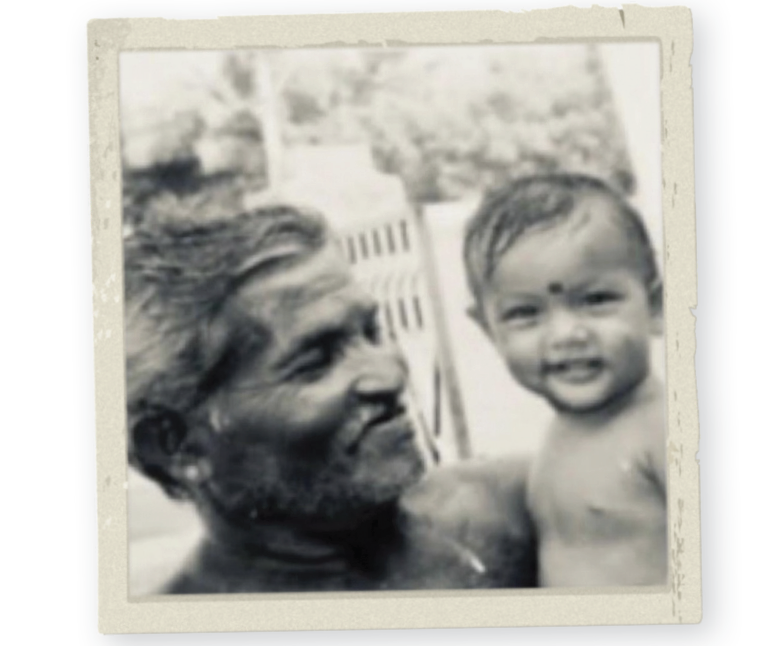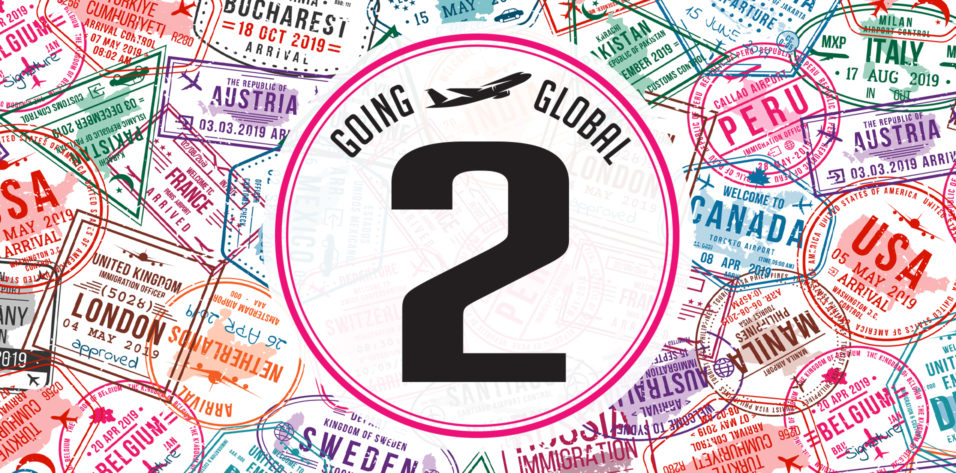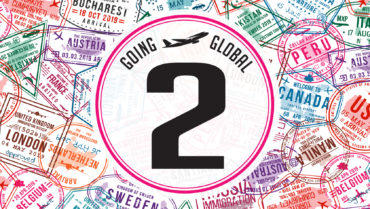My grandfather was diagnosed with glaucoma when I was 8 years old. For most of my life, however, the term glaucoma was foreign to me. My grandfather’s disease was always described as “high eye pressure.” Childhood visits to India included accompanying him to the renowned Aravind Eye Hospital, which is located not far from our local village. Despite having advanced vision loss at the time of his diagnosis, my grandfather was able to retain useful vision until his death with medical and surgical interventions (Figure).

Figure. Dr. Thangamathesvaran and her grandfather, the inspiration behind her decision to pursue ophthalmology and her desire to improve access to vision screening centers in rural villages in India.
Years later, my grandfather’s sister also started to experience gradual vision loss. Unfortunately, because of the COVID-19 pandemic, she was delayed in receiving appropriate care and thus experienced severe and advanced vision loss before being diagnosed with glaucoma.
Stories such as this from within my own family led me to consider several questions:
- How common is glaucoma?
- Considering that many individuals have a family history of the disease, why is there no screening paradigm, especially in developing nations?
- What interventions are in place to address these shortcomings?
My family hails from a village outside the major city of Coimbatore, Tamil Nadu, India. For part of my childhood, traveling to school meant riding on dirt roads in cattle-driven carriages. Over the years, the dirt roads have become paved highways, and local tea stalls have been replaced by fast-food restaurants. Despite these transitions, health literacy, especially with regard to eye care, continues to be a significant social issue.
THE BURDEN OF GLAUCOMA
In 2019, approximately 40 million people in India were living with blindness. Glaucoma is the third most common etiology (behind refractive errors and cataracts) and the most common irreversible cause of blindness. It is estimated that 8.5% of the global population has the disease. In lower- and middle-income countries throughout the world, nearly 75% of cases of glaucoma are undiagnosed, compared with 90% in India. This poses a significant social and economic burden on the population.1
Many population-based studies have been conducted to evaluate the prevalence of glaucoma in India, including the Vellore Eye Study, Andhra Pradesh Eye Disease Study, Aravind Comprehensive Eye Survey, Chennai Glaucoma Study, and West Bengal Study. These studies have highlighted that, although primary open-angle glaucoma may be more common in India, patients with primary angle-closure glaucoma may be two times more likely to become blind.
SHORTCOMINGS IN TRAINING
One of India’s primary challenges in managing glaucoma is the population burden. Even with a diagnosis rate of less than 10%, the disease burden in the country is significant enough that most cases of glaucoma must be diagnosed and managed by general ophthalmologists as opposed to glaucoma specialists.2-7 Furthermore, there may be shortcomings in current training programs. In the Chennai Glaucoma Study, a significant number of patients who were diagnosed with primary open-angle glaucoma actually had primary angle-closure glaucoma.8 This reflects a discrepancy in gonioscopy skills and structured ophthalmic residency training.
ACCESSIBILITY TO SCREENINGS AND TREATMENT
A disproportionate cost burden exists for patients with glaucoma who live in rural areas compared with those who live in cities. In a study evaluating a tertiary care center in India, patients from rural areas spent 170% more on travel, food, and lodging than patients from the city. Furthermore, even among lower-income groups, patients residing in cities spent 13.4% of their monthly income on medication, whereas those residing in rural areas spent 17.43%. When the costs of travel, lodging, and lost wages are included, the average consolidated cost for patients living in rural areas rose to 42% of their monthly income. Most patients from these areas work in unorganized sectors (eg, farming) and earn daily wages; they therefore typically pay direct out-of-pocket costs for their glaucoma treatment.9
Potential management strategies to alleviate the cost burden include using generic alternatives and emphasizing the importance of regular eye care. The latter may be accomplished through glaucoma education programs, which could be provided in the form of videos or personal counsel in patients’ local language. Local government efforts to target these rural areas have started to germinate in the form of vision screening centers and information dissemination organizations.
CONCLUSION
Glaucoma continues to pose a significant health care burden in India, especially among lower-income and rural families. These challenges may be mitigated by improving training programs so that they are more structured and address common skills gaps among ophthalmology trainees and by improving access to screening and treatment for lower-income and rural patients.
1.Senjam SS. Glaucoma blindness-a rapidly emerging non-communicable ocular disease in India: addressing the issue with advocacy. J Family Med Prim Care. 2020;9(5):2200-2206.
2. Dandona L, Dandona R, Mandal P,et al. Angle-closure glaucoma in an urban population in southern India: the Andhra Pradesh eye disease study. Ophthalmology. 2000;107:1710-1716.
3. Dandona L, Dandona R, Srinivas M, et al. Open-angle glaucoma in an urban population in southern India: the Andhra Pradesh eye disease study. Ophthalmology. 2000;107:1702-1709.
4. Ramakrishnan R, Nirmalan PK, Krishnadas R,et al. Glaucoma in a rural population of southern India: the Aravind Comprehensive Eye Survey. Ophthalmology. 2003; 110:1484-1490
5. Vijaya L, George R, Paul PG, et al. Prevalence of primary angle-closure disease in an urban south Indian population and comparison with a rural population. The Chennai Glaucoma Study. Ophthalmology. 2008;115:655-660.
6. Vijaya L, George R, Paul PG, et al. Prevalence of primary open-angle glaucoma in an urban south Indian population and comparison with a rural population. The Chennai Glaucoma Study. Ophthalmology. 2008;115:648-654.
7. Thomas R, Paul P, Muliyil J. Glaucoma in India. J Glaucoma. 2003;12:81-87.
8. George R, Arvind H, Baskaran M, Ramesh SV, Raju P, Vijaya L. The Chennai Glaucoma Study: prevalence and risk factors for glaucoma in cataract operated eyes in urban Chennai. Indian J Ophthalmol. 2010;58(3):243-245.
9. John D, Parikh R. Cost-effectiveness of community screening for glaucoma in rural India: a decision analytical model. Public Health. 2018;155:142-151.



